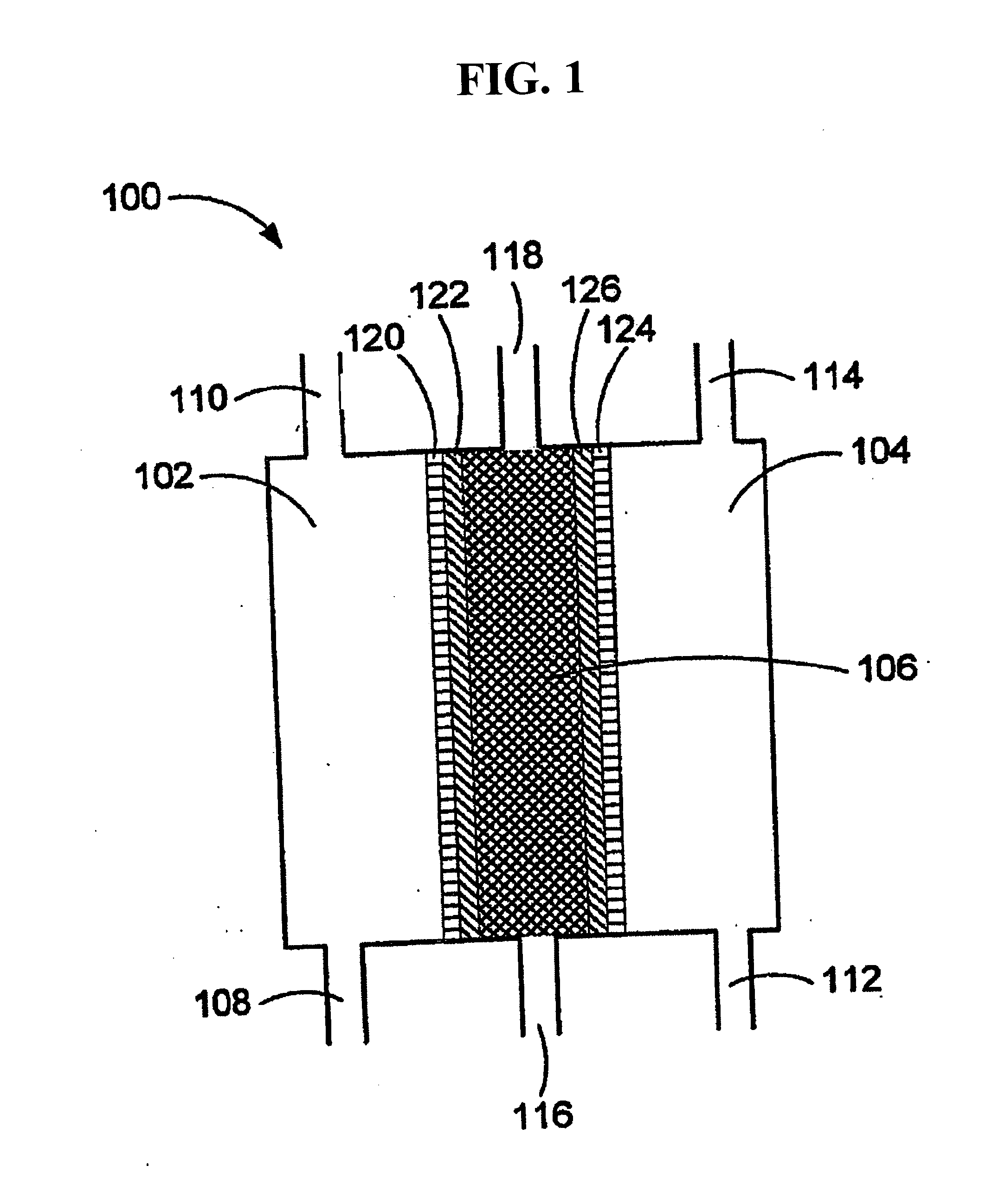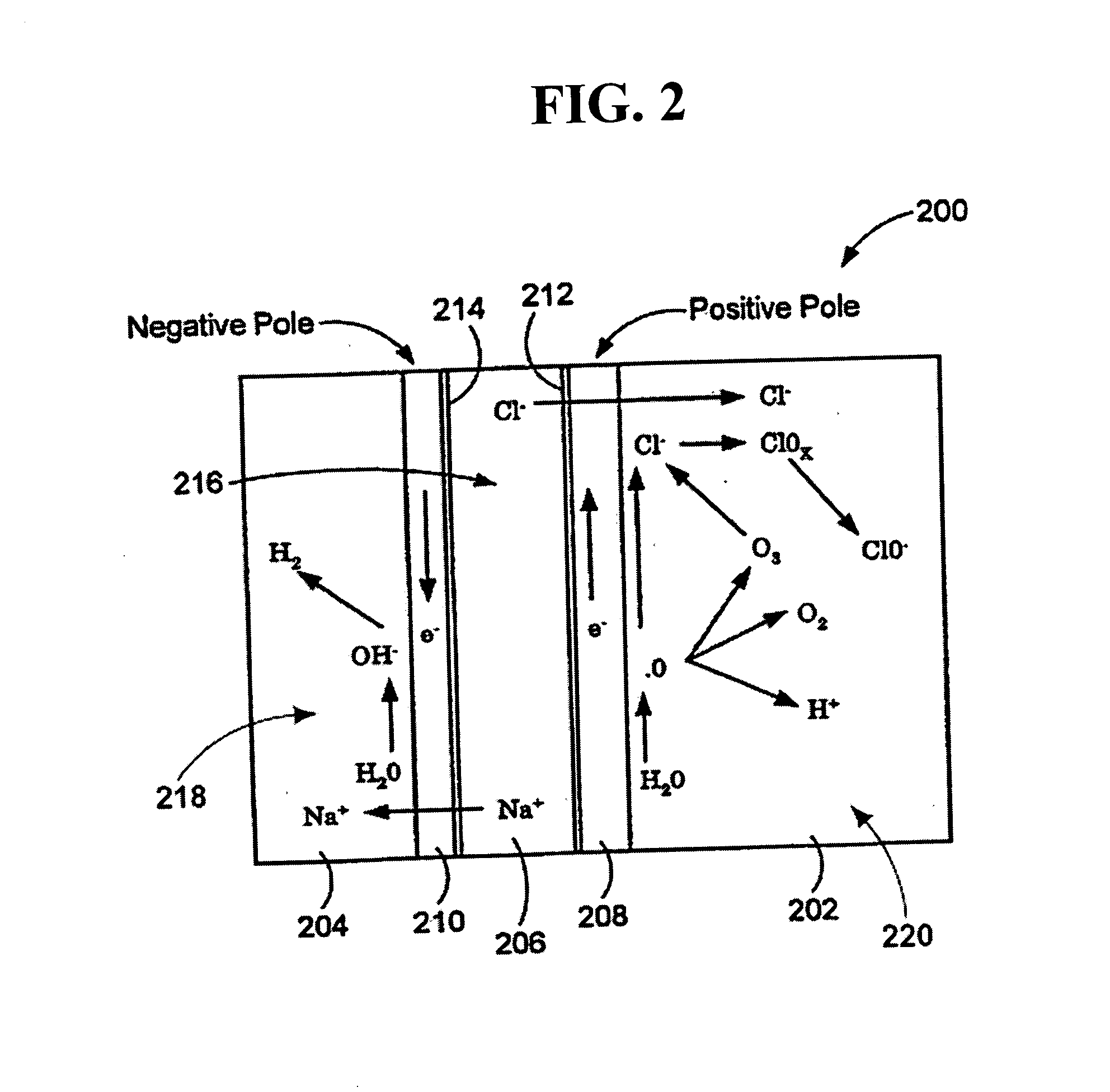Method of treating skin ulcers using oxidative reductive potential water solution
- Summary
- Abstract
- Description
- Claims
- Application Information
AI Technical Summary
Benefits of technology
Problems solved by technology
Method used
Image
Examples
examples 1-3
[0214] These examples demonstrate the unique features of the ORP water solution of the invention. The samples of the ORP water solution in Examples 1-3 were analyzed in accordance with the methods described herein to determine the physical properties and levels of ionic and other chemical species present in each sample. The results obtained for chlorine dioxide, ozone and hydrogen peroxide are based on standard tests used to measure such species; however, the results may be indicative of different species, which can also generate positive test results. Further, it has been reported that chlorine dioxide, ozone and hydrogen peroxide can react with hypochlorite resulting in their consumption and the production of other species (e.g., HCl and O2). The pH, oxidative-reductive potential (ORP) and ionic species present are set forth in Table 1 for each sample of the ORP water solution.
TABLE 1Physical characteristics and ion species present forthe ORP water solution samplesEXAMPLE 1EXAMP...
examples 4-10
[0216] These examples demonstrate the addition of a bleaching agent to the ORP water solution according to the invention in various amounts. In particular, these examples demonstrate the antimicrobial activity and fabric bleaching ability of the compositions.
[0217] A 10% Clorox® bleach solution was prepared using distilled water. The following solutions were then prepared using the 10% bleach solution: 80% ORP water solution / 20% bleach (Example 4); 60% ORP water solution / 40% bleach (Example 5); 40% ORP water solution / 60% bleach (Example 6); 20% ORP water solution / 80% bleach (Example 7); and 0% ORP water solution / 100% bleach (Example 8). Two control solutions were also used for comparison including 100% ORP water solution / 0% bleach (Example 9) and an ORP water solution with 0.01% Tween 20 detergent (Example 10). The physical characteristics of these samples were determined, specifically pH, oxidative-reductive potential (ORP), total chlorine (Cl−) content, hypochlorous acid (HClO−) ...
example 11
[0223] This example demonstrates the use of an exemplary ORP water solution, Microcyn as an effective antimicrobial solution.
[0224] An In-Vitro Time-Kill evaluation was performed using Microcyn oxidative reductive potential water. Microcyn was evaluated versus challenge suspensions of fifty different microorganism strains—twenty-five American Type Culture Collection (ATCC) strains and twenty-five Clinical Isolates of those same species—as described in the Tentative Final Monograph, Federal Register, 17 Jun. 1994, vol. 59:116, pg. 31444. The percent reductions and the Log10 reductions from the initial population of each challenge strain were determined following exposures to Microcyn for thirty (30) seconds, one (1) minute, three (3) minutes, five (5) minutes, seven (7) minutes, nine (9) minutes, eleven (11) minutes, thirteen (13) minutes, fifteen (15) minutes, and twenty (20) minutes. All agar-plating was performed in duplicate and Microcyn was evaluated at a 99% (v / v) concentratio...
PUM
 Login to View More
Login to View More Abstract
Description
Claims
Application Information
 Login to View More
Login to View More - R&D
- Intellectual Property
- Life Sciences
- Materials
- Tech Scout
- Unparalleled Data Quality
- Higher Quality Content
- 60% Fewer Hallucinations
Browse by: Latest US Patents, China's latest patents, Technical Efficacy Thesaurus, Application Domain, Technology Topic, Popular Technical Reports.
© 2025 PatSnap. All rights reserved.Legal|Privacy policy|Modern Slavery Act Transparency Statement|Sitemap|About US| Contact US: help@patsnap.com



